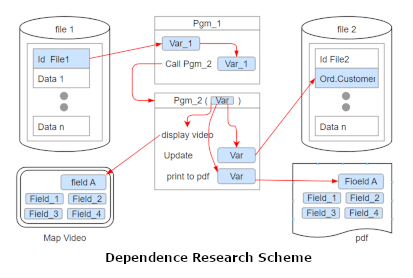This Case Study provides a brief description of the issues addressed with SkillUp in a company-wide project relating to the complete review of the company Information System on the AS400 Platform (also known as iSeries, System i, IBM i, IBM Power Systems), for the adoption of transactions with multi-currency amounts following the opening of the company on international markets.
Scope
Adaptation of the company information system for the introduction of multicurrency management for all the amounts present and the management of the exchange criteria to be adopted following the opening of the company on international markets. The management of the different currencies used in the various processes also involved managing the storage of the exchange rates to be used with various reference dates, in relation to the dates of actual completion of the transactions.
Context
Italian national publishing group which, following its acquisition by a multinational group, found itself having to operate on multiple markets.
Problems
The presence of integer numeric fields without a reference currency did not allow for management similar to that envisaged by the other companies in the group, for which it was necessary to introduce multi-currency management.
This involved modifying the existing Amount Fields to include decimals, as well as introducing Currency and Reference Exchange and relative date fields.
Critical issues
The information involved in the new multicurrency management was in many cases used in calculations that required specific case-by-case assessments in the adjustment criteria to be adopted.
Furthermore, in this project, unlike others relating to interventions on the format and coding of values, there is a further complexity linked to the fact that the introduction of currency management implies that in many points of management of the amounts, in addition to the adjustment of the format of the fields, it is necessary to obtain the exchange rate to be applied and store the information of the exchange rate valid at the time of the transaction.
Verification of the correct match between Sources and Objects running in the Production environment: this aspect was managed with particular attention to prevent problems resulting from the use of “misaligned” Sources.
Realization
The development of the project consists in identifying all the intervention points in the programs / archives / logical views / data areas / etc. through a scan of all the sources that considers all the “propagation” links of the information.
For a Field to be modified on an Archive, the need for intervention can be spread to numerous other Fields / Archives / Programs in relation to the processing carried out, see fig. “Link Search Scheme”:

Very often the intervention points are numerous (in the order of thousands) and the use of automatic/semi-automatic tools enormously reduces times and risks of error.
In relation to the intervention points identified and the intervention rules decided in the design phase, ad hoc tools are created that automatically make corrections to the Sources (Data Structures, Physical Files, Logical Files, View Files, Print Files, Programs, …) for the vast majority of “standard” cases (attributable to predefined rules of intervention) and that, in the case of “non-standard” situations, the evidence of the necessary manual checks and corrections is indicated on specific Log Files and with “Tags” inserted in the sources.
In this project, in relation to the critical issues set out above, this aspect (“non-standard” situations) had a particular relevance and impact both in the phase of defining the rules and in the management of exceptions encountered in development.
During the project, various Development / Test Environments are set up in preparation for the subsequent “unit tests” and “integration tests” (with the involvement of Users).
Numerous “stress tests” are also prepared and carried out to force the processing of the modified Objects in order to verify the correct functioning of the modified versions of the objects involved.
Conclusion
The approach adopted for the Project, based on the development and use of automatic tools, allowed the completion of the adaptation of the Information System to the presence of multiple currencies in a short time and with high reliability.
The reliability of the result obtained is certainly greater than what would have been obtained with traditional interventions, without automatic tools, involving a greater number of resources and for a longer time.
Furthermore, it was possible to dedicate more time of the project resources to manage the additional interventions hoc necessary in the “critical” points highlighted by the automatic analysis tools as all the automatable aspects did not require “human” intervention.